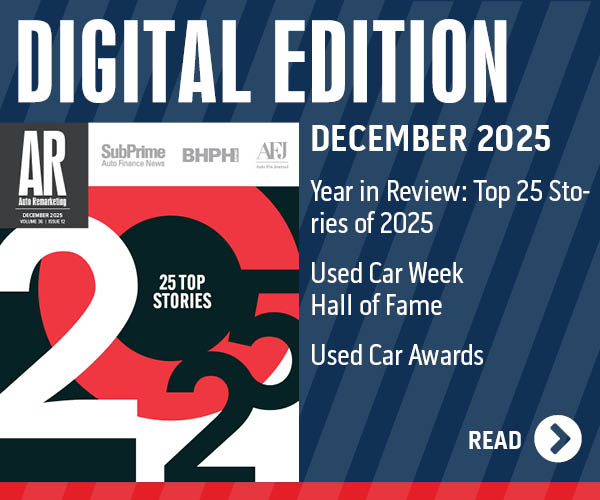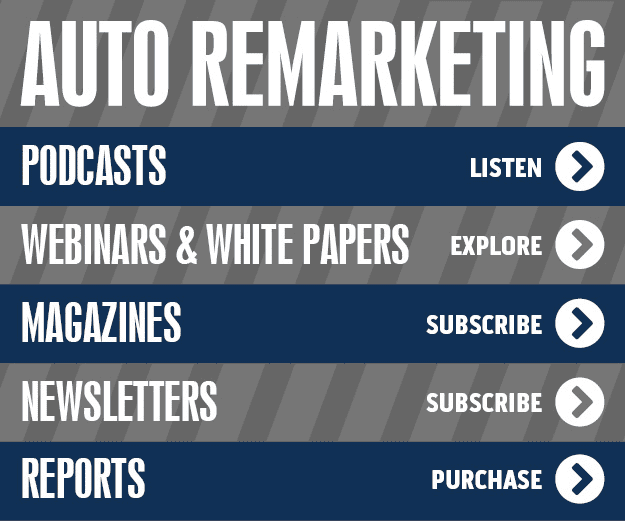COMMENTARY: Transparency is good business

By subscribing, you agree to receive communications from Auto Remarketing and our partners in accordance with our Privacy Policy. We may share your information with select partners and sponsors who may contact you about their products and services. You may unsubscribe at any time.
For the automotive sales industry, transparency in digital advertising is not just legally required, it’s good for business.
Did you know: The Federal Trade Commission and state attorneys general have brought (and won) legal challenges designed to ensure that customers can learn up front how much they will actually pay for a vehicle and not be surprised by hidden charges that they did not budget for?
We’re not talking about legitimate add-ons and upgrades, but the sorts of buried fees and qualifications that might commonly be characterized as “bait ‘n switch.”
Violations of the resulting legal requirements can be costly, so compliance is paramount.
Besides, transparency is and always has been simply good business. A little over 100 years ago, Frank Farrington wrote in his classic guide to the art of selling, The Successful Salesman, “No matter what you have to sell, the truth is good enough to tell. Boost your goods and boost them well. But stick to facts!”
Farrington’s words still ring true. Lucky for us, today we have digital tools that provide real-time pricing and payment facts everywhere from dealership websites to syndicated partner sites.
Subscribe to Auto Remarketing to stay informed and stay ahead.
By subscribing, you agree to receive communications from Auto Remarketing and our partners in accordance with our Privacy Policy. We may share your information with select partners and sponsors who may contact you about their products and services. You may unsubscribe at any time.
Top 5 features to keep dealers compliant
Here is what to look for in a comprehensive compliance tool:
- Automated payment calculations of all necessary payment details, including vehicle costs, interest rates, down payments, and financing terms reduce human error and ensure that all financial information provided in advertisements is accurate. This helps eliminate misleading claims that could expose both the dealership and its managers to liability.
- Real-time price and offer updates to promotions, inventory, and financing offers should automatically update across all marketing materials so consumers are always presented with the most current and accurate information. This ensures compliance and reduces the risk of confusing consumers or generating FTC scrutiny.
- Clear and transparent payment disclosure must be integrated into ads, showing the full cost of the vehicle, the monthly payments, interest rates, and any additional fees. This transparency helps build consumer trust and ensures that the dealership meets the FTC’s advertising requirements, preventing deceptive practices that could lead to personal liability for operators and managers.
- Multichannel compliance maintained across all marketing channels, whether it’s online, print, or TV provides a consistent approach to advertising so dealerships can avoid mistakes in different advertising media, which might otherwise expose them to regulatory action.
- FTC compliance features align advertising with all legal standards, preventing the risk of deceptive advertising claims. This feature is particularly important for managers and operators, as it ensures that they are taking the necessary steps to stay compliant and avoid personal liability.
A century after Farrington, sales guru Marcus Sheridan, whose work has generated over $1 billion in revenue, echoes his call for truth in communicating with customers: “Honest and transparent content is the best sales tool in the world. Period.”
To that end, embedding digital functionality into online marketing ensures the customer gets the facts. It also mitigates against liability for dealership owners and employees. It’s simple, it’s transparent, and it’s necessary. And it’s just good business.
So, before they leave home to meet their new car, customers can rest easy knowing exactly how much it will cost: their penny-perfect payment.
Paul Appelbaum is VP of business development at OfferLogix


